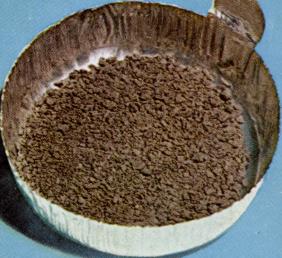| Subject |
has pronunciation |
has space group |
has thermal neutron capture cross section |
has isotope mass range |
has heat of vaporization |
has discoverer |
has thermal conductivity |
has discovery date |
has name origin |
has linear expansion coefficient |
has heat of fusion |
has specimen |
has daily dietary intake |
has mineral |
has melting point |
has neutron scattering length |
has origin |
has image |
has term symbol |
has crystal cell dimension |
has mass of element in person |
has phase changed temperature |
is a kind of |
has heat capacity |
has molar volume |
has definition |
has boiling point |
has hazard |
has biological role |
has ionic radii |
has electrical resistivity |
has relative atomic mass |
has chief source |
has registry number |
has density |
has atomic radii |
has atomic number |
has mass magnetic susceptibility |
has discovery location |
has number of isotope |
has abundance |
has heat of sublimation |
has atomic emission line |
reacts with |
has longest lived isotope |
has filling orbital |
has symbol |
has use |
has crystal type |
has world production |
has electron configuration |
has number of proton |
has mass absorption coefficient |
has level in human |
has electronegativity |
has group |
|---|
| actinium | ak-tin-iuhm | Fm3m | | 209 to 232 | 418 kJ mol-1 | Andre Debierne | 12 W m-1 K-1 at 300 K | 1899 | aktinos from Greek word for 'ray' | 14.9 K-1 | 14.2 kJ mol-1 | not commerecially available | nil | | 1320 ± 50 K | | |  | 2D3/2 in ground state | a = 531.1 pm | nil for a 70 kg average person | | radioactive element | 20.84 J K-1 mol-1 for gas at constant pressure 0.1 MPa at 298.15 K | 22.6 cm3 | soft, silvery-white, radioactive metal which glows in the dark | 3470 ± 300 K | never encountered normally, dangerous because it is a powerful source of α-radiation, element found only inside nuclear facilities or research laboratories | none | 118 pm for Ac3+ | | 227.0728 for 227Ac in units of 12C = 12.000 | uranium ore contain 0.2 p.p.m. | 7440-34-8 for Chemical Abstracts System database | 10060 kg m-3 for solid at 293 K | 188 pm | 89 | | Paris, France | 26 | nil in seawater | 51.9 ± 0.5 kJ mol-1 | 591.085 nm for Ac II | water to release hydrogen gas | actinium 227 | 5f | Ac | | f.c.c. | probably less than a gram | [Rn]6d17s2 in ground state | 89 | cm2 g-1 for MoKα X-ray diffraction | nil | 1.1 Pauling | a column number in the table of the elements |
| americium | amer-is-iuhm | Fm3m for β phase | 75.3 barns | 227 to 247 | 284 kJ mol-1 | Glen T. Seaborg, R.A. James, L.O. Morgan, and A. Ghiorso | 10 W m-1 K-1 at 300 K | 1944 | america from English | | 14.4 kJ mol-1 | | nil | none | 1445 K | 0.83 in 10-12 cm units | |  | 8S7/2 in ground state | a = 489.4 pm for β phase | nil for a 70 kg average person | 1347 K at α to β phase crystal transition | radioactive element | | 17.78 cm3 | radioactive silvery metal which does not occur naturally | 2880 K | intense α-radiation, maximum permissible body burden of 241Am is 0.03 μCi - it targets bone. γ radiation is a problem in gram amounts. | none | 107 pm for Am3+ | 68 × 10-8 Ω m | 243.0614 for americium 243 in units of 12C = 12.000 | | 7440-35-9 for Chemical Abstracts System database | 13670 kg m-3 for solid at 293 K | 173 pm | 95 | +5 × 10-8 kg-1 m3 | Chicago, Illinois, US | 23 including nuclear isomers | nil in seawater | 34.2 kJ mol-1 | 605.464 nm for Am I (strong) | air, steam and acids, but not alkalis | americium 243 | 5f | Am | source of radiation for γ-radiotherapy | f.c.c. for β phase | probably a few kilograms per year | [Rn]5f77s2 in ground state | 95 | | nil | 1.3 Pauling | a column number in the table of the elements |
| supernova produced radioactive element | | | | | | | | | | | | | | | | | exploding core of a supernova | | | | | | supernova produced element | | | a radioactive element produced within the core of an exploding supernova | | | | | | | | | | | | | | | | | | | | | | | | | | | | | | |
 Astronomy View all facts Glossary Help
Astronomy View all facts Glossary Help Astronomy View all facts Glossary Help
Astronomy View all facts Glossary Help

 Next element: supernova produced element Up: element, radioactive particle Previous element: planetary element
Next element: supernova produced element Up: element, radioactive particle Previous element: planetary element